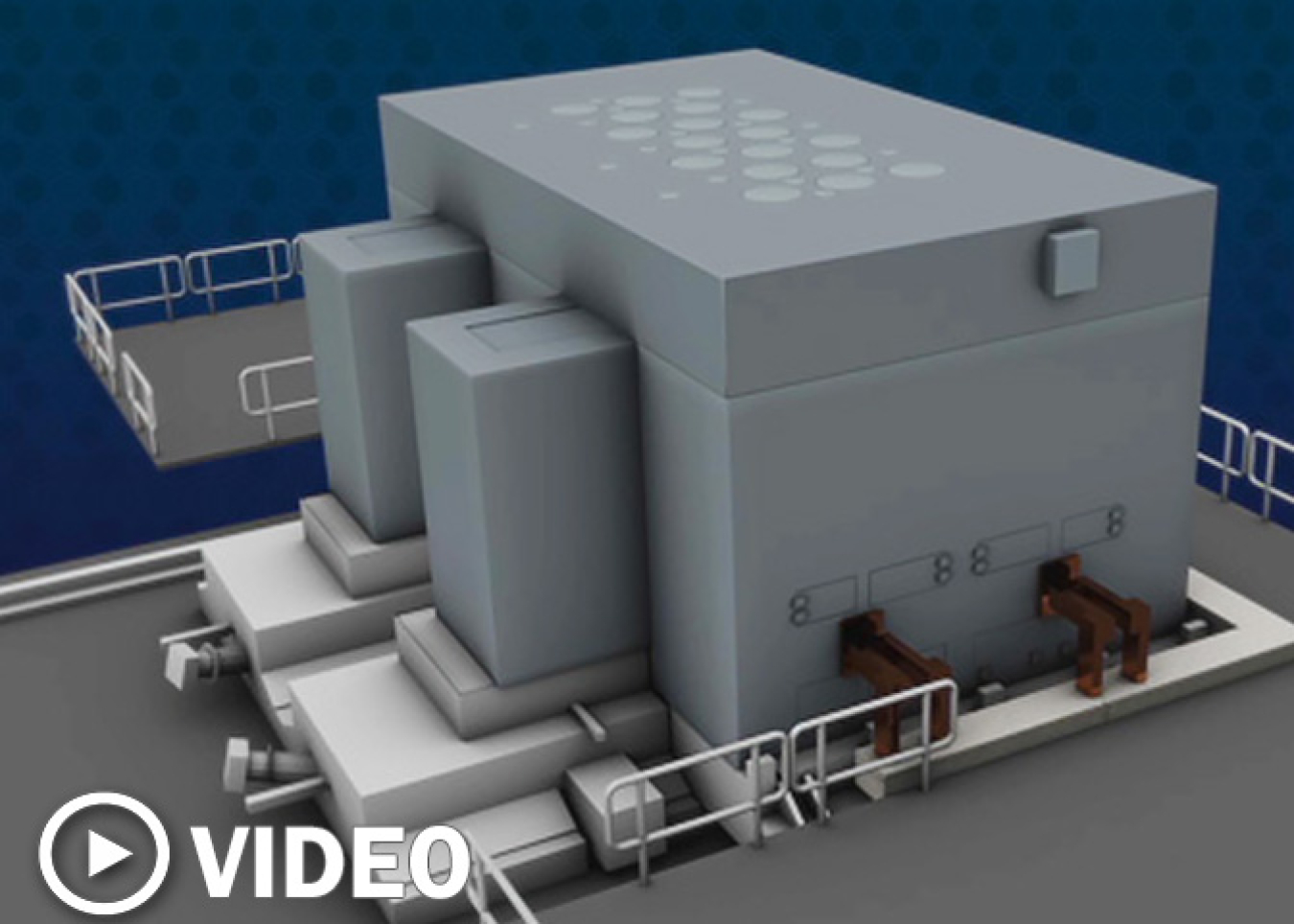Crews at the Hanford Site have begun heating up the world’s largest melter that will transform radioactive and chemical tank waste currently stored in underground tanks into a vitrified glass form safe for disposal.
Office of Environmental Management
October 11, 2022
Watch this 3D animation about melter heatup, a crucial step in commissioning the Hanford Site’s Waste Treatment and Immobilization Plant.
RICHLAND, Wash. – Crews at the Hanford Site have begun heating up the world’s largest melter that will transform radioactive and chemical tank waste currently stored in underground tanks into a vitrified glass form safe for disposal. Initiating and completing heatup of the melter is a critical step in commissioning the site’s Waste Treatment and Immobilization Plant (WTP).
Last week, workers began heating up the first of two 300-ton melters inside WTP’s Low-Activity Waste Facility. The melters represent the heart of the process for vitrifying the waste by immobilizing it in glass. It could take several weeks to finish heating up the melter to its commissioning and operational temperature of 2,100 degrees Fahrenheit.
“Over the last two years, the Department and its One Hanford contractors have made significant progress in the Direct-Feed Low-Activity Waste (DFLAW) Program to prepare for treating tank waste,” said Brian Vance, manager of EM’s Office of River Protection and Richland Operations Office. “We are building on this progress by beginning to heat up the first WTP melter using a disciplined approach.”
Contractor Bechtel National, Inc. will follow a comprehensive process to ensure the temperature increases slowly and insulation inside the melter dries out slowly. Temporary startup heaters have been inserted into the top of the melter, and glass beads, called frit, will be added. As the beads melt and a molten glass pool rises to cover electrodes inside the melter, the melter’s permanent heating equipment will take over to maintain the operational temperature. The process can be viewed in this 3D animation.
“When we finish heating up the first melter, that will be another significant step in commissioning the Waste Treatment and Immobilization Plant for future operations,” said Project Director and Bechtel National Inc. Senior Vice President Valerie McCain. Bechtel is the prime contractor building, starting up and commissioning the plant for EM. “I’m proud of our team and our alumni who made this possible.”
After heatup, the first melter will remain active using nonradioactive materials, and lessons learned from the first melter will be used to begin the process to heat up and commission the second melter. When both melters are at operating temperature, the facility will run simulated waste through them as they continue preparations to vitrify waste.
The DFLAW Program is a system of interdependent projects and infrastructure improvements, managed and highly integrated as a program, that will operate together to vitrify the waste.
Information on the commissioning process is available on the Journey to Melter Heatup website.
The plant facilities can be viewed using the self-guided Hanford Virtual Tour.
To receive the latest news and updates about the Office of Environmental Management, submit your e-mail address.

